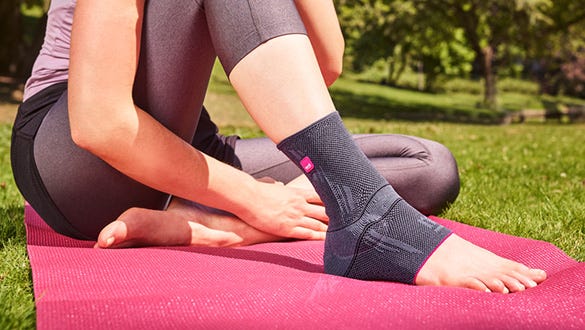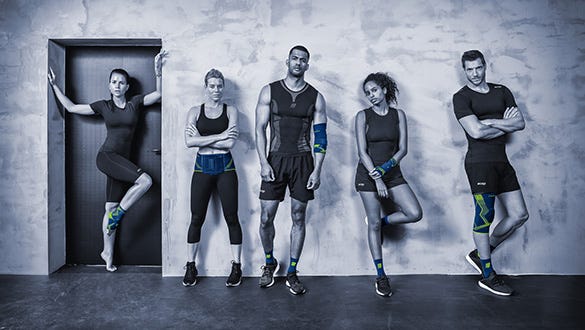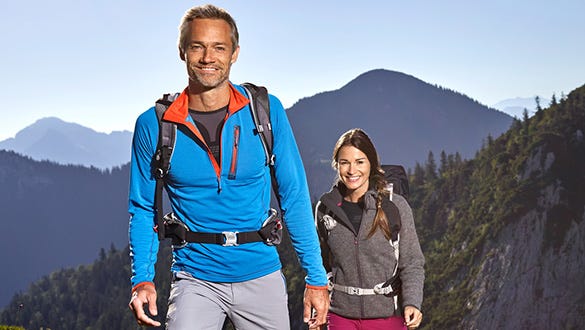- Free First Class Delivery
- Buyer Protection
- Secure Online Shopping
- Healthcare Professional? Click here
Hiking
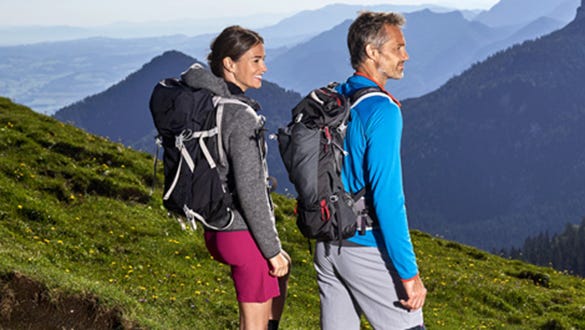

Categories
Hiking: Discover new trails
Whether alone or in a group, in the foothills or in the Peak District – hiking can be very varied and with the right preparation, it offers the perfect opportunity to enjoy the beautiful countryside air. If the right destination is chosen to match your ability and equipment, then the hike will be a beautiful experience.
The gentle road to fitness
Researchers are agreed; regular long walks in the great outdoors are ideal for modern diseases. Hiking makes our cardiovascular systems more resilient and stabilises our back muscles. Furthermore, repeated gentle exercise strengthens the bony architecture of our bones and protects against osteoporosis. And don't forget: hiking keeps you fit and toned. The energy consumed by walking a mile is similar to that used to run a mile. It just takes a little longer.
The right hiking gear
Since the weather in the mountains can turn nasty very quickly, many hiking clubs recommend wearing layers of protective clothing against the cold and bad weather: wear light tops, a fleece and a weatherproof jacket. Make sure you have functional clothing; a hat, gloves and socks with a reinforced sole. Sturdy outdoor shoes are generally good enough for the average hiking trail, but a more demanding mountain hike over rocks and scree requires strong mountain boots with a sole with a good grip and watertight upper material. And besides a drink, it is also recommended that you may need the following items in your rucksack: walking maps, sun blocker, first-aid kit, a space saving blanket, a mobile telephone and a penknife.
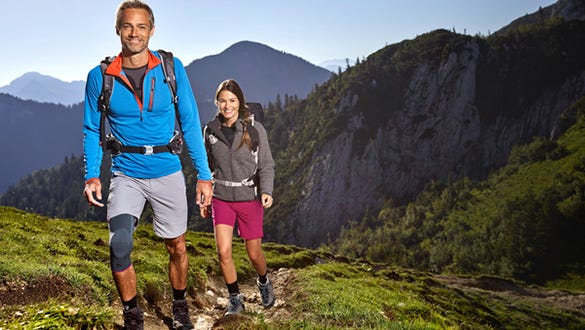

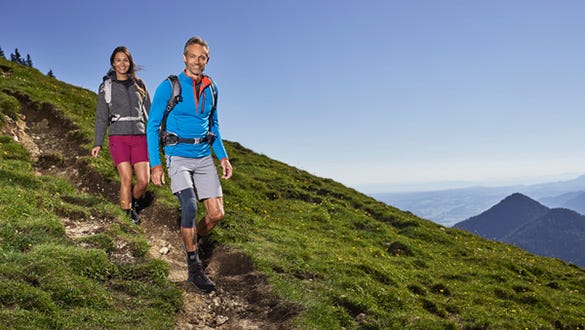

Don't misjudge the mountain!
Mountain terrain can be treacherous. It's not the more extreme forms of activities, such as mountaineering and skiing, that are particularly likely to cause accidents, it's hiking too. A study by the German Alpine Club showed that 32% of all accidents reported on mountains were sustained during what was supposed to be a relaxing walk. With 65% and in pole position of the causes of accidents: lack of experience in the mountains, inadequate skills, and misjudgement.
Safety
Hiking clubs recommend you observe the following points to minimise the risk of an accident when hiking:
- Only set off if you are healthy and fit, take suitable gear with you.
- Pack sufficient food and drink, and don't forget your walking map.
- Plan your tour meticulously and according to your physical fitness.
- Tell your family and friends where you plan to go.
- It is advisable to consult a sports doctor before going on your first tour.
Health hints for summiteers – treating injuries incurred while hiking
Sprains are among the most common walking injuries. If you've twisted your ankle, you should initially elevate the leg and cool the sprained ankle. If you cannot walk any further, you must alert the mountain rescue service. Sprains are usually uncomplicated.
Your doctor can recommend a medical device for you such as the medi supports Levamed or Levamed active. These combine compression with a massage effect that promotes the healing process.
Depending on the degree of severity of the injury, there are also orthoses for the ankle joint. M.step from medi is a firm half-shell and stabilises the joint very well in combination with the shoe. It also has foam gel cushions that mould themselves to all the anatomical features and ensure even compression. The M.step ankle orthosis can be fitted quickly and reliably with only two Velcro straps; the straps can be taken off the outer shell and fixed individually.
However, in some rare cases, ligament injuries and swelling caused by a sprain can lead to chronic instability of the joint. This means that the joint is too lax and you could twist and sprain the ankle again. Special ankle supports (e.g. Levamed active) have a strap system that can provide additional stabilisation of the ankle joint to protect it against repeated twisting injuries.

